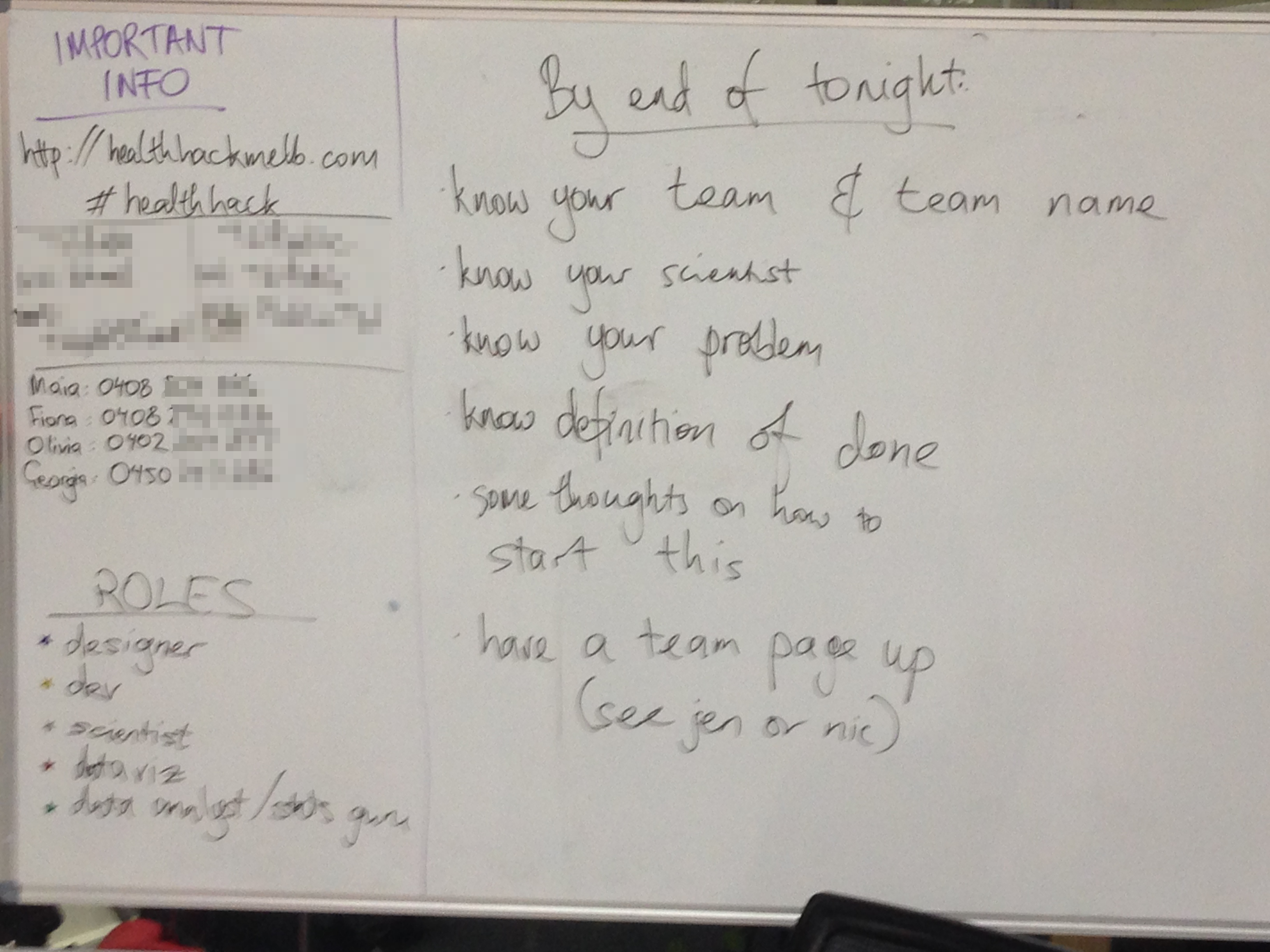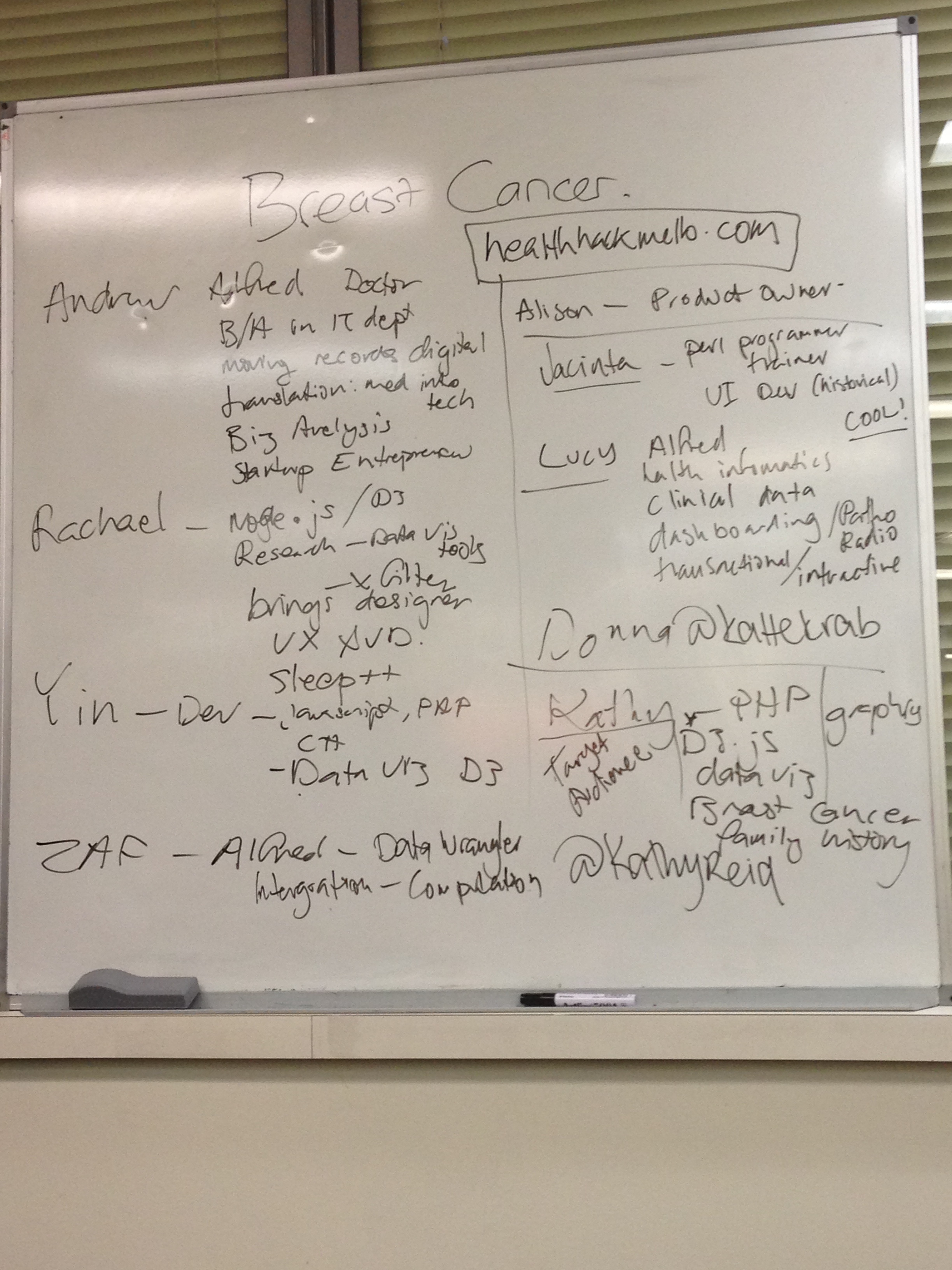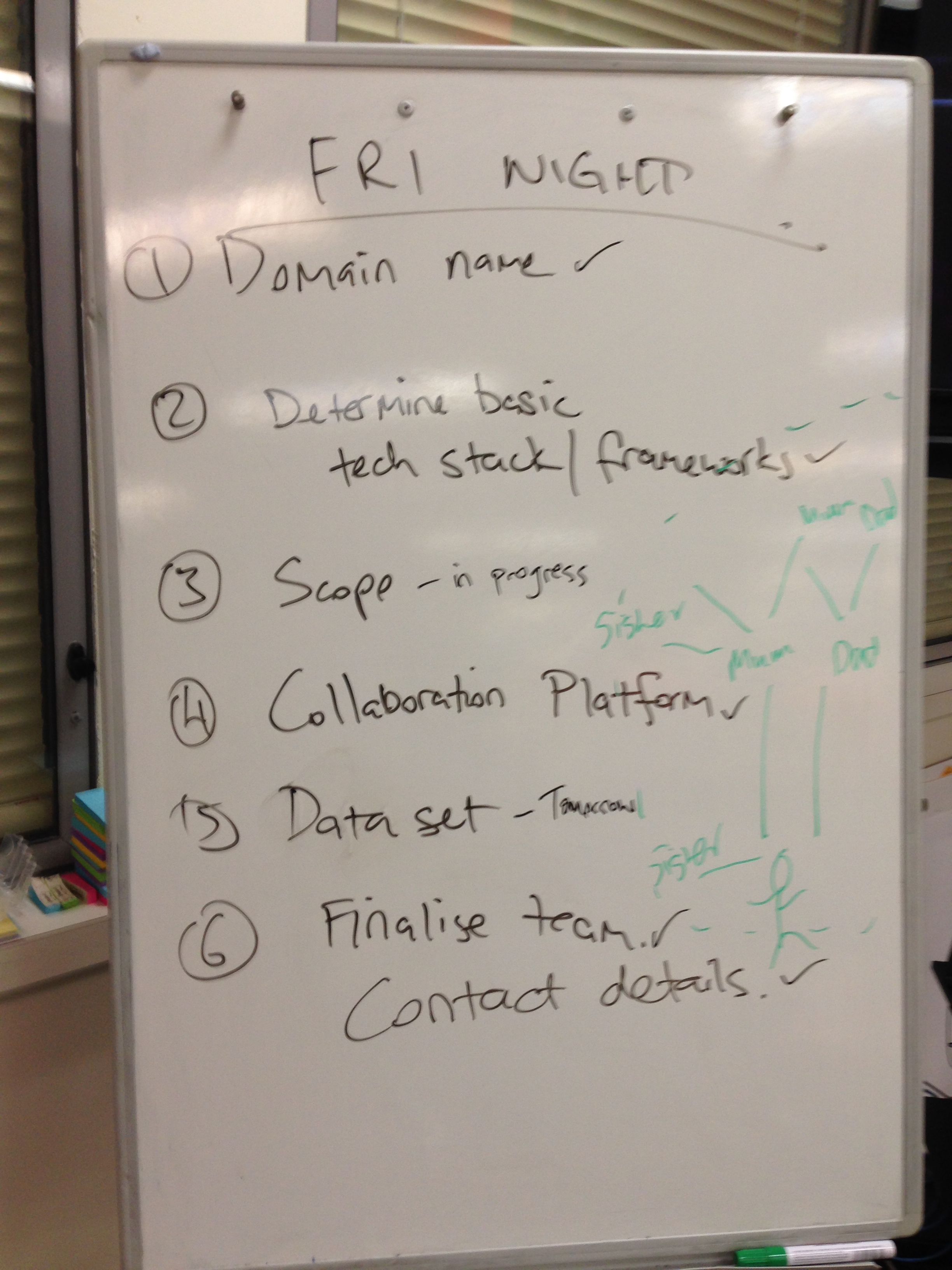GeKnow - HealthHackAu2013/wiki GitHub Wiki
Communicating Whole Exome Sequencing (WES) possibilities to patients attending a genetics clinic
Team - team page with photos
-
Alison - Scientist, Product owner (Molecular Biologist & Genetics Doctor)
-
Rachel - Developer (Node.js, D3)
-
Yin - Developer, Data visualisation (js, PHP, C++, D3)
-
Anna - UX
-
Jacinta - Developer, UI Designer (Perl, PHP, JS (JQuery))
-
Andrew - Analyst, PM (Balsamiq, JIRA, Confluence, Medicine)
-
Kathy - Developer, Designer, Analyst (PHP, js, D3, Photoshop, Illustrator)
-
Lawrence - Designer
-
Lucy - Data visualisation analyst (SQL, Qliqview)
-
Zaf - Developer, Data analyst (SQL, Android, js, Ruby)
The Problem
Before commencing genetic testing (Whole Exome Sequencing), patients need to decide whether or not to be informed of additional genetic predispositions discovered during their testing. For example, some people may not wish to know about a predisposition to any diseases which are not treatable for the foreseeable future.
Often the choices are many, and a level of education is required. The purpose of this design is to aid the clinician in counselling and educating the patient.
The secondary design is a tool to aid the clinician in educating the patient about their test results and the implications of those test results.
The Solution
Provide a clinician view which provides:
- Patient name
- diagnosis
- diagnosis extra notes (private)
- date of birth/year of birth
- client id
- family history
- family history extra notes (private)
- ethnicity
- Patient's base risk for:
- medically actionable disease
- medically unactionable disease
- reproductive risk
- predisposition increased risk
- and whether the patient wishes to know each of the above (binary).
Provide a patient's view that collects/displays
- Patient name
- diagnosis
- date of birth/year of birth
- family history ( free text )
- ethnicity
- Patient's base risk for:
- medically actionable disease
- medically unactionable disease
- reproductive risk
- predisposition increased risk
- And whether the patient consents to find out each of the above.
Desirable expansions
Pre-test
- Links to resources/citations for population risks
- Broader consent options
- want to know if risk is raised by more than x%
- want to know if unactionable disease becomes actionable
- want to know if clinical/research opportunities arise
- improved family tree
- Authentication and authorisation
Post-test
- Post-test views, which include the patient's actual risks based on test results
- Links to resources/citations (such as OMIN) for both population risks and actual results
- checklist of where to go from here
- further referrals
- Email this to me/Print this.
- Authentication and authorisation
Application/Relevance
GeKnow is an communication tool to facilitate the pre and post- test counselling sessions for individuals
undergoing whole exome genetic testing in a clinical Genetics service. It explains the possible benefits and
complication associated with an exome-focussed approach to enetic germline variations, This tool will be used
during the discussion with your genetic specialist (aka. geneticist). Your risks are influenced by a number of
factors including your gender, ethnicity, age and family history.
The use of Whole exome sequencing (WES) will increases the probability that the underlying genetic variant
associated with your medical disorder is identified but can also identify variation which may or may not be
associated with the disorder and which will require further investigation. Additionally, this approach will identify
disease-causing genetic variants associated with diseases that the patient may not know they are at risk of
developing and may not be treatable.
Geknow is aimed at empowering individual undergoing whole exome genetic testing make decisions concerning
their current and future health.
Datasets
Published and peer reviewed journals with particular reference to Yang et. al and New England Journal 2013, October 15 (ref 2).
Links
- App @ http://healthhack.herokuapp.com/
- Git @ https://github.com/rkstedman/healthhack
- Wiki ... you're here! (https://github.com/HealthHackAu2013/wiki/wiki/GeKnow)
Tech stack
- dc.js - Dimensional Charting Javascript Library (http://nickqizhu.github.io/dc.js/)
- Tech Y
Tradeoffs/analysis
What went well, what would you have done better?
Future functionality
- Links to resources/citations for population risks
- Broader consent options
- want to know if risk is raised by more than x%
- want to know if unactionable disease becomes actionable
- want to know if clinical/research opportunities arise
- improved family tree
Post-test
- Post-test views, which include the patient's actual risks based on test results
- Links to resources/citations (such as OMIN) for both population risks and actual results
- checklist of where to go from here
- further referrals
- Email this to me/Print this.
Day 1 Pics








